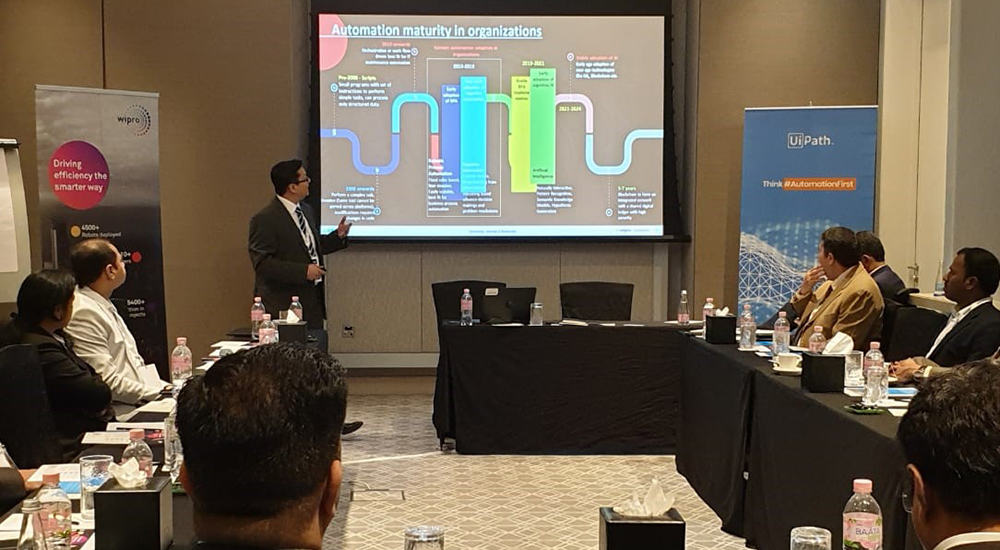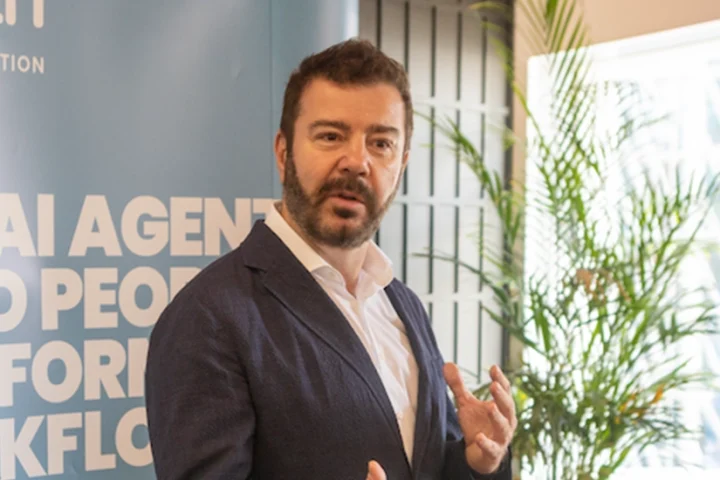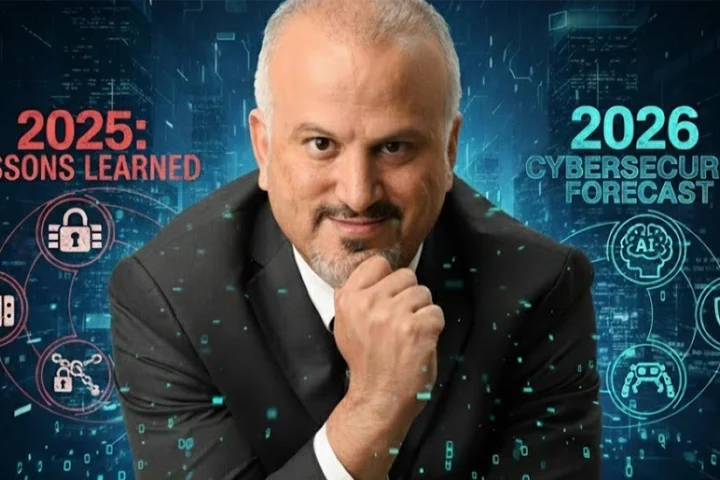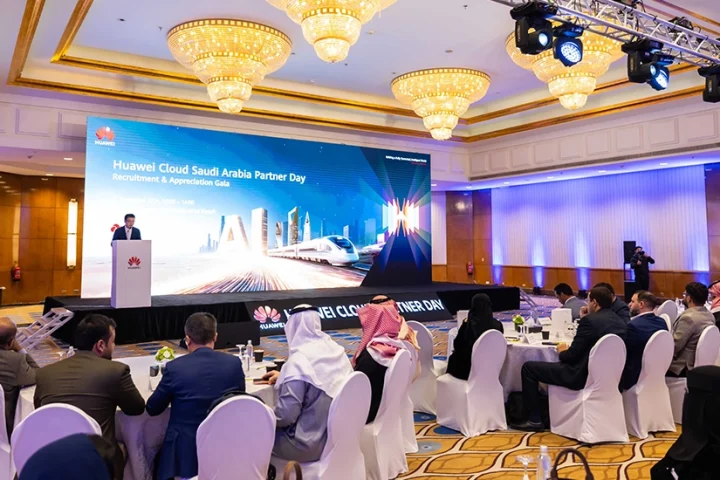On 18 March, GEC Media Group, publishers of Business Transformation, Enterprise Channels, The Titans, Cyber Sentinel, successfully concluded an executive round table discussion on robotic process automation. The theme of the roundtable was Automation First, an important go to market followed by UiPath globally. The roundtable was completed in partnership with UiPath and Wipro. The main focus across the half day discussion was about reorienting organisations to put the customer first and then to relook at both the front office and back office processes.

The first presentation was completed by UiPath’s Vice President for Middle East and Africa, Karan Dixit. He pointed out that a number of factors are coming together to drive the adoption of robotic process automation or RPA. These include the ability to map a device’s display with 100% accuracy, the development of artificial intelligence and its application into a wide range of use cases, and the continuing reduction of cost arbitrage as the basis for business process outsourcing.
Since investments in legacy IT infrastructure and applications cannot be disregarded, robotic process automation is an optimal way to enhance productivity where capital investments in assets are still significant. robotic process automation perfectly emulates repetitive tasks undertaken by human workers but does so in automated manner. “robotic process automation acts as the hands and eyes of the task but not the brain,” pointed out Dixit.
Robotic process automation offers significant advantages for business and IT and this includes building an open platform, the ability to operationalise rapidly, the fact that it uses an intelligent approach based on artificial intelligence principles, the ability to scale optimally, and the significant levels of compliance and security that are inbuilt.
Businesses undertaking an robotic process automation approach need to classify their processes on the basis of how much human intervention is required to compete the process end to end. Dixit points out that those processes which do not require human intervention are prime candidates to start robotic process automation and can be mapped into automation. Other processes that require human intervention can be automated using robotic process automation but can only be completed through a call for action, requiring human intervention.
Dixit also pointed out that UiPath is the fastest growing, global enterprise software company and Forester positions UiPath in its leader quadrant. UiPath has a large number of global alliance partners including Google, Microsoft, Oracle, SAP, amongst others.

The next presentation was conducted by Abid Mustapha, Etisalat Digital Transformation Director. Mustapha explained that Etisalat has set up an internal centre of excellence to drive robotic process automation. In a period of twelve months, the number of software robots used by Etisalat have increased from 6 to 80 and the number of transactions being managed by these robots are now in millions. So successful have been the gains that Etisalat now plans to more than double the number of existing robots.
Etisalat measures the benefits of its robotic process automation implementation both with external and internal customers. As an example, around its call centre operations, gains are measured by reduction in the number of minutes required to complete a particular call, as well as reduction in the number of clicks required to navigate through multiple back-end applications.
Mustapha had a number of learning points to offer. He mentioned that businesses should not be in hurry to roboticise. It is better to relook at the processes with a business analyst before implementing robotic process automation. During the roll out, it is better to learn fast and fail fast so that changes can be made rapidly rather than a long drawn out implementation and correction process.

The final presentation was made by Amit Saigal, Associate Vice President and Global Head, Transformation Solutions, Wipro. A key takeaway from Saigal’s presentation was that a structured process approach is critical for successful implementation and gains from robotic process automation. BOTs need to be looked as digital employees and workers, who are an extension of an organisation’s existing workforce. To onboard the new digital workforce, a detailed change management process needs to be designed and implemented from the beginning to ensure that upstream and downstream processes of the organisation like IT, HR and Compliance are aligned.
“BOTS work on a happy path process,” mentions Saigal, indicating that organisations should first automate select parts of their business that have well defined and repeatable processes and then gradually move to more complex processes, which require human intervention and supporting technologies like OCR, machine learning and artificial intelligence. Saigal also shared a demo of Wipro’s Holmes Document Cognitive Digitisation Solution built in collaboration with UiPath, that helps automate processes with hand-written documents.
Businesses should worry less about finding the best tool and worry more about finding the right tool, stresses Saigal, and that means a deep understanding of the process in question and its impact on the customer, whether internal or external. Another way of identifying where to start is to use a quadrant based on criticality of the business operation versus the estimated impact on cost of that operation.
Wipro brings a rich global experience of implementing 5,000+ bots across 100+ customers. Saigal shared the key learning and reasons for robotic process automation projects failure. This included lack of well-defined change management process, governance, ownership and accountability; absence of a holistic view of data about the projects in-scope; lack of cross functional teams; mismatch of test and real-life environments during testing; failure to recognise IT’s role in enabling a suitable infrastructure, amongst others. Saigal also sought to dispel some of the myths surrounding robotic process automation comparing them with actual, real life scenarios.
Similar to the challenges of any large or small project roll out, robotic process automation also requires an effective communication strategy across the organisation. Saigal pointed out that the communication strategy should inspire employees of the organisation to engage and spread the word. They should be engaged enough to collaborate and contribute. In summary, the event was good time spent for executives looking at driving transformation through the convergence of business and IT.


Key takeaways
- Businesses undertaking a robotic process automation approach need to classify their processes on the basis of how much human intervention is required to complete the process end to end.
- Robotic process automation acts as the hands and eyes of the task but not the brain.
- Organisations need to put the customer first and then to relook at both the front office and back office processes.
- Robotic process automation requires an effective communication strategy across the organisation.
- The communication strategy should inspire employees to engage and spread the word.
- UiPath has a large number of global alliance partners including Google, Microsoft, Oracle, SAP, amongst others.
























